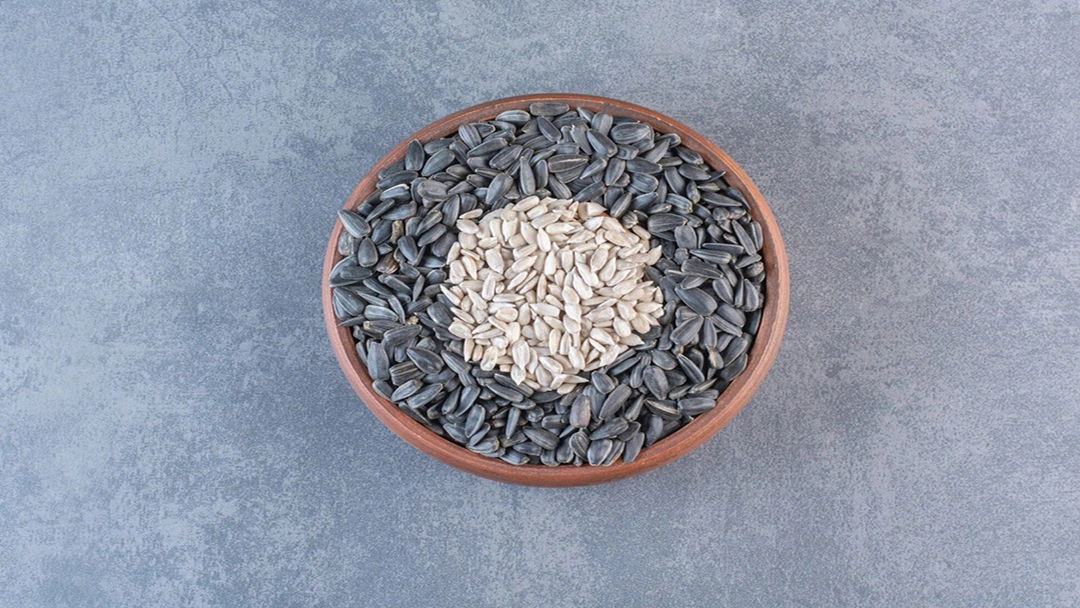Carnivore vs. Atkins Diet: Food List
One of the main differences between the Carnivore diet vs. Atkins diet can be found in the foods these two diets allow and restrict. You can read a full-blown comparison of the foods to eat and avoid in these two diets below.
[cta-gocarnivore-plans]
Foods to Eat
Carnivore Diet allows:
- Beef (including steak and ground beef)
- Pork (including pork chops, bacon)
- Lamb
- Poultry (chicken, turkey, duck)
- Organ meats (liver, heart, kidney)
- Fish (salmon, mackerel, sardines)
- Shellfish (shrimp, crab, lobster)
- Dairy (if tolerated; butter, cheese, heavy cream)
- Eggs
Atkins Diet allows the following food groups in its Induction Phase - Foods to Eat:
- Protein sources: Beef, pork, poultry, fish, seafood, eggs
- Low-carb vegetables: Leafy greens (spinach, lettuce), broccoli, cauliflower, asparagus
- Fats: Olive oil, avocado oil, coconut oil
- Cheese (in moderation)
- Nuts and seeds (in moderation)
[cta-meetings]
The Atkins diet allows the following foods in its Later Phases
- Berries (strawberries, raspberries)
- More vegetables (carrots, peppers)
- Legumes (beans, lentils)
- Whole grains (oats, quinoa)
- Fruits (apples, pears, melon)
- Starchy vegetables (sweet potatoes)
Learn More: Can You Eat Pork Rinds on the Carnivore Diet?
The Atkins Diet Boosts Weight Loss
According to a study published in the New England Journal of Medicine, individuals following the Atkins Diet lost an average of 6.8 kg (15 lbs) over six months compared to 2.7 kg (6 lbs) for those following a conventional low-fat diet.
Foods to Avoid
The Carnivore diet eliminates:
- All plant-based foods (fruits, vegetables, grains, legumes)
- Processed foods
- Sugars and sweeteners
- Beverages other than water.
The Atkins diet eliminated the following foods in its Induction Phase:
- High-carb foods: Grains, starchy vegetables, fruits, sugars
- Processed foods
- Sugary snacks and desserts.
[cta-meal-plan]
During other phases, the Atkins diet eliminates:
- High-sugar foods,
- Processed and refined foods,
- High-carb foods.
What about the rules? Does the Carnivore diet employ rules different from the Atkins diet? Here are the Carnivore diet vs Atkins diet rules.
Carnivore Diet vs. Atkins Diet: Rules
The main point of differences between diets is their rules. Let's review the main rules of the Carnivore diet vs. Atkins diet to find out how they differ and which one suits your goals and status best.
The Carnivore Diet
- Food Focus: Animal-based foods, including meat, poultry, seafood, eggs, and some dairy products.
- Plant-Based Foods: Allows no plant-based foods, such as fruits, vegetables, nuts, grains, and legumes.
- Carbohydrates: Allows extremely low or no carbohydrates.
- Fats and Protein: Focuses on high-fat and moderate to high-protein consumption.
- Beverages: Water is the main beverage allowed to stay hydrated. Alcohol on Carnivore diet: Best alcoholic drinks for Carnivore diet
- Snacking: Animal-based snacks, including Carnivore-friendly birthday cakes, waffles, sandwiches, muffins, and desserts. Find them all here on Carnivore diet recipes.
- Processed Foods: Highly processed foods and sugars are strictly avoided.
- Supplements: Some Carnivores may take supplements to prevent nutrient deficiencies.
[cta-gocarnivore-plans]
The Atkins Diet May Improve Health
The Atkins Diet has been reported to lead to significant improvements in various health markers, including triglyceride levels, HDL cholesterol levels, and blood pressure.
The Atkins Diet
The Atkins diet has multiple phases to gradually reintroduce more carbohydrate sources.
Induction Phase (Phase 1):
- Carb Restriction: Restricting carbohydrates to create ketosis and promote weight loss.
- Food Choices: Focuses on protein-rich foods, non-starchy vegetables, healthy fats, and limited nuts/ seeds and cheeses.
- Berries: Limited portions of berries.
- Sugar and Processed Foods: No sugar and processed foods are allowed.
- Beverages: Water, herbal tea, and other non-caloric beverages are allowed.
Later Phases (Ongoing Weight Loss, Pre-Maintenance, Maintenance)
- Gradually Increasing Carbohydrates: Aims to gradually increase carbohydrate consumption through different phases.
- Foods to Reintroduce: Additional foods like fruits, starchy vegetables, and whole grains are reintroduced in controlled amounts.
- Caloric Intake: You need to control portions and caloric balance to have sustainable weight loss and maintenance.
Now that we have talked about the Carnivore diet vs Atkins diet differences, let’s check out their similarities and see what they have in common.
[cta-meetings]
Carnivore vs. Atkins Diet: Differences
Let’s go through some more details, helping us understand the core of the Carnivore diet vs Atkins diet. Here we’ll focus on these two diets’ purpose, food list, supplements, and simplicity.
Purpose
- The main objective of the Carnivore Diet is fat melt, weight loss, and health improvement through consuming animal products and eliminating plant-based foods.
- The Atkins Diet aims to achieve weight loss, weight maintenance, and improve overall health by manipulating carbohydrate intake and inducing ketosis in its initial phase.
Food List
The Carnivore Diet
- Allowed Foods: Meat, poultry, seafood, eggs, and limited dairy, including cheese and heavy cream (if tolerated).
- Excluded Foods: All plant-based foods, including fruits, vegetables, grains, legumes, and processed foods.
The Atkins Diet
- Induction Phase (Phase 1): Allows protein-rich foods, non-starchy vegetables, healthy fats, and limited nuts/seeds and cheeses.
- Later Phases: Gradually allow other sources, such as fruits, starchy vegetables, and whole grains, in controlled amounts.
[cta-meal-plan]
"The Carnivore Diet is based on the belief that humans evolved to eat meat and that animal foods are the most nutritious foods for optimal health."
Supplements
- Some Carnivore dieters take supplements like vitamin D, omega-3 fatty acids, and electrolytes under medical supervision to prevent nutrient deficiencies.
- The Atkins Diet generally allows for a diverse range of nutrient sources, and nutrient deficiency is not common in it. But dieters can take supplements after medical consultation based on their phase and individual needs.
Simplicity
- The Carnivore Diet is easy to do, as it only needs the dieter to consume animal products and avoid plant-based foods.
- The Atkins diet provides a phased approach, which can make the diet a bit complex but also provides more flexibility and variety.
Carnivore vs. Atkins Diet: Similarities
- Low Carbohydrate Consumption: Both diets try to decrease carbohydrate consumption.
- Ketosis: Both diets aim to reach ketosis to burn fat for energy instead of carbs.
- Focus on Protein: Both diets prioritize consuming high-quality proteins.
- Satiety and Fullness: Both diets are filling as they contain lots of protein and fat.
- Potential for Weight Loss: Both diets help weight loss by decreasing calorie intake and increasing fat burning.
- No Processed Foods: Both diets exclude or minimize processed foods, refined sugars, and unhealthy fats.
- Increased Fat Intake: While the Carnivore Diet contains higher saturated fats, some phases of the Atkins Diet also include higher fat consumption, but from plant-based sources like avocado and olive oil.
- Insulin Sensitivity: Both diets help insulin sensitivity and regulate blood sugar control, which benefits individuals with insulin resistance or type 2 diabetes. How Can a Carnivore Diet Cure Diabetes Type 1 and 2?
- Individualization: Both diets are adjustable and can be changed to adapt to individual preferences and goals.
- Short-Term Health Improvements: Both diets provide short-term improvements in markers like triglycerides, HDL cholesterol, and blood pressure.
[cta-gocarnivore-plans]
Speaking of rules and approaches, let’s see how the Carnivore diet and the Atkins diet perform regarding carbohydrates and ketosis.
Carbohydrates
The Carnivore Diet
- Carbohydrate Approach: The Carnivore diet restricts or eliminates carbohydrates and prioritizes consuming protein and fat from animal products.
- Carbohydrate Sources: The Carnivore diet allows no plant-based carbohydrates, including fruits, vegetables, grains, legumes, and starchy foods.
The Atkins Diet
- Carbohydrate Approach: The Atkins Diet gradually increases carbohydrate consumption as the dieter progresses through the diet's phases. The first phase (Induction) highly restricts carbs. In the Atkins Diet Progressive Reintroduction phase, dieters gradually reintroduce carbohydrates from specific food sources, such as fruits, vegetables, legumes, and whole grains.
The Carnivore Diet Can Improve Health Markers
A study published in the International Journal of Environmental Research and Public Health found that participants following a Carnivore Diet for 90 days experienced improvements in certain health markers, including blood pressure and body composition.
[cta-meetings]
Ketosis
Both diets emphasize reaching ketosis to burn fat instead of carbs to promote fat melting and weight loss, but the Carnivore Diet limits carbohydrate consumption from the start, whereas the Atkins Diet reaches ketosis in its initial phase before reintroducing carbs in later phases.
Carnivore vs. Atkins Diet: Which Is Better for Weight Loss?
Individual factors, preferences, and perseverance are among the main factors affecting the effectiveness of a diet.
Both Carnivore and Atkins can help weight loss, but considering the following factors help you decide which one is better for your weight loss.
- Focusing on maximizing protein and fat and minimizing carbs, the Carnivore Diet can increase satiety, which helps reduce overall calorie intake and promote weight loss. Some individuals may experience quick initial weight loss due to consuming fewer carbohydrates.
- The Atkins Diet's phased approach helps you reduce carbs gradually, making it easier for some individuals to follow the diet. Its "Induction" phase can boost initial weight loss thanks to low-carb intake and ketosis induction. The possibility of reintroducing carbs in the following phases may make the Atkins diet more sustainable. But carb reintroduction can slow down weight loss or lead to weight regain.
Which Is Better for You?
There is no “better diet” for everyone, as each body has its own specifications and status, and each individual has their own goals and priorities. But there are important tips to help you make informed decisions.
[cta-meal-plan]
- Consult a professional first.
- Find a sustainable diet aligning with your lifestyle and food preferences.
- Consider your goals and see which diet helps you achieve them more easily.
- Choose a diet that focuses on nutrient balance.
- Monitoring your progress and make adjustments as needed.
All in all, consider the Carnivore Diet if:
- You can tolerate and enjoy a restrictive and animal-based diet.
- You seek fast weight loss.
- You want to be relieved from some health conditions.
- You can monitor your changes and address potential nutrient deficiencies.
- You want a simple and delicious eating plan.
But consider the Atkins Diet if:
- You have time for a gradual approach to decreasing carbohydrates in a phased structure.
- You want a flexible diet with a wide range of foods available.
- You want a diet with a longer history and more research supporting its effects on weight loss and health.
[cta-gocarnivore-plans]
Summary
This article on the Carnivore Diet vs Atkins Diet is a thorough review of the rules, foods, and performance of these two diets. Both approaches try to maximize protein and fat and minimize carbs to reach ketosis and promote weight loss.
To stay healthy and reach your health and fitness goals, you need to consult a healthcare professional and, at the same time, increase your knowledge about different dietary approaches, which is what 5 Minute Body tries to help you with.































